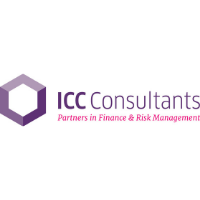Blockchain and disruption in the financial world: Will banks survive?
| 4-3-2019 | Carlo de Meijer | treasuryXL
The world of banking as we know for many years is in a fundamental transformation process, triggered by new technologies. The most important is blockchain that is said to fundamentally change the way financial transactions are handled today. It is forecasted that this technology will have significant consequences on how traditional banks do business in the future, enabling new business models, deliver new value propositions and solve longstanding challenges, with the well-needed transparency and security in transactions that nowadays involve multiple parties and large amounts of data.
Though this technology is currently still at a nascent stage, blockchain is proclaimed to be a game-changing, disruptive innovation that holds the capability of completely shaking up the landscape of banking in the coming years. Others even proclaim that blockchain will make banks (entirely) obsolete.
Questions that arise are: how will blockchain technology drive disruption in the banking industry, what are the main areas that will be touched, and how will the banking ecosystem look like in say five to ten years from now.
But what is disruption (not!)?
But before answering these questions, it is important to agree what disruption really means. Since the word disruption was launched in the nineties this term has been used for so many things that it has lost their original meaning. Everything that is ‘new’ is described as disruptive and/or innovative.
It was the US professor Clayton Christensen who introduced the idea of disruptive innovation in 1997. According to him disruption means “any innovation that transforms a complicated, expensive product into one that is easier to use or is more affordable than the one most readily available”.
Disruption has three components: responding to competitors effectively; identifying new growth opportunities; and, improving understanding of what customers want.
“A disruptive business is likely to start by either satisfying the less-demanding customers or creating a market when none existed before. So, when mainstream customers start adopting the entrants’ offerings in volume, disruption has occurred”.Clayton Christensen
It is however very difficult to know in advance what real disruptors are. The process is often very long. It could take years before the true effects of disruption are presenting themselves in the market.
Though the classic examples of disruption involved technological advancements, disruption is not all about technology. Not every successful business or product needs to disrupt. But disruption is any time organizations find a more efficient, better way of doing things that attracts customers.
What makes blockchain (so) disruptive for banks?
What makes blockchain so disruptive for the banking industry? Why is this technology forecasted to revolutionising the way banks are nowadays doing business? The answer to this question lies in the three specific in-build properties of a blockchain: Decentralized, distributed and Immutability. These differ completely from those of banks that are centralised organisations.
Decentralized network
Blockchain operates on a decentralized network, that is acting on a peer-to-peer basis. It handles all operations similar to a bank, but without any central authority that monitors all data. So it potentially cuts out the middleman, giving back the power to the owner of the assets (i.e. data or tokens carrying some financial value).
All information is stored across its network via blocks. These blocks, that are time-stamped and linked together with all past and current transactions, are permanently recorded and consistently reconciled and updated in a cryptographically secure way. By storing data across its network, blockchain eliminates the risks that come with data being held centrally.
Distributed ledger
A second property of blockchain is the distributed ledger, that allows sharing of a ledger of activity – such as arbitrary data or virtually anything of value between multiple parties. What makes blockchain so important is its ability to automate trust and transparency among all parties using it. Because the ledger is distributed among all transaction participants, it exists simultaneously in multiple places. Each of the computers in the distributed network maintains a copy of the ledger to ensure transparency and also prevent a single point of failure and all copies are updated and validated simultaneously. This makes it extremely difficult to manipulate entries or tamper with the data without the other parties noticing.
Immutable records
A third unique property is its immutability. By design, blockchains are inherently resistant to modification of data. All blockchain networks adhere to a certain protocol for validating new blocks. No changes can be made once the system is set with the initial standards. Once recorded, the data in any given block cannot be altered without the alteration of all the subsequent blocks, which requires the consensus of the network majority.
Read the full article of our expert Carlo de Meijer on LinkedIn

Economist and researcher





 François de Witte – Founder & Senior Consultant at
François de Witte – Founder & Senior Consultant at 




